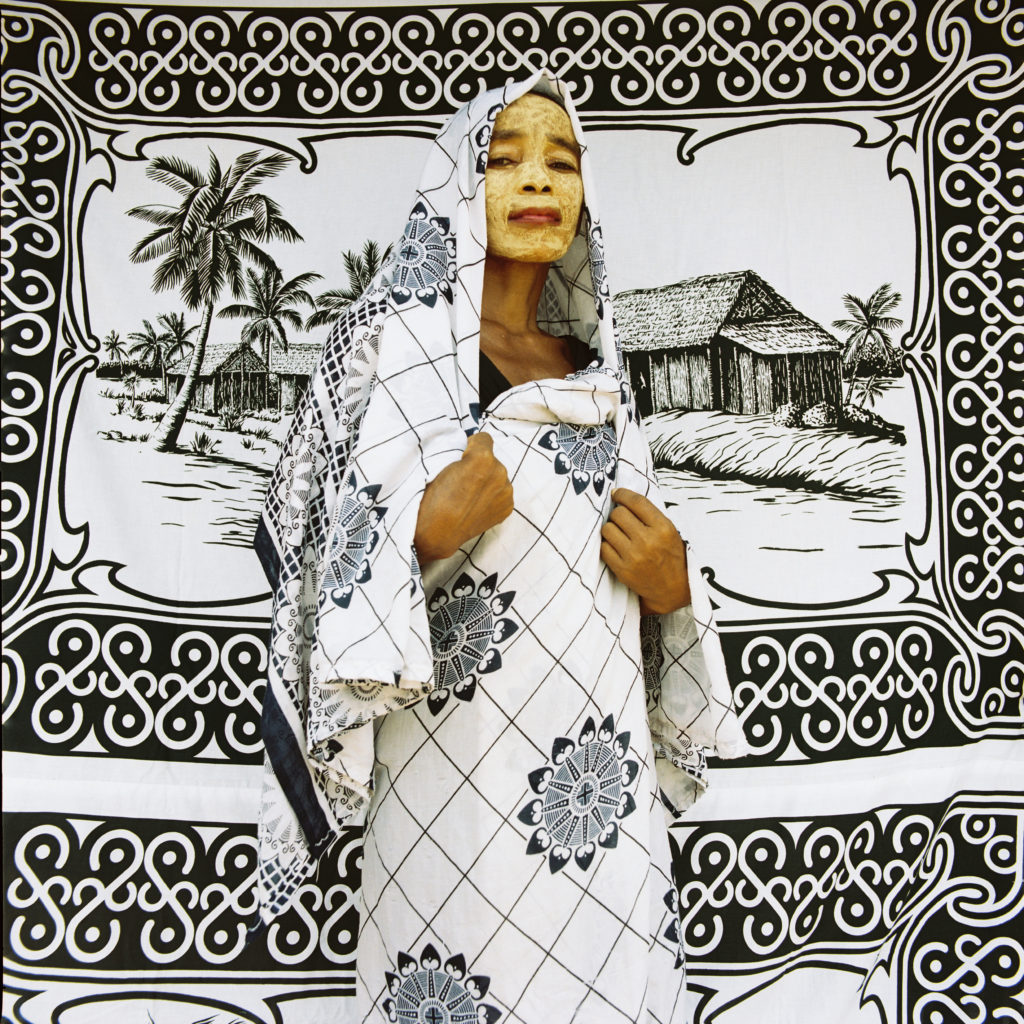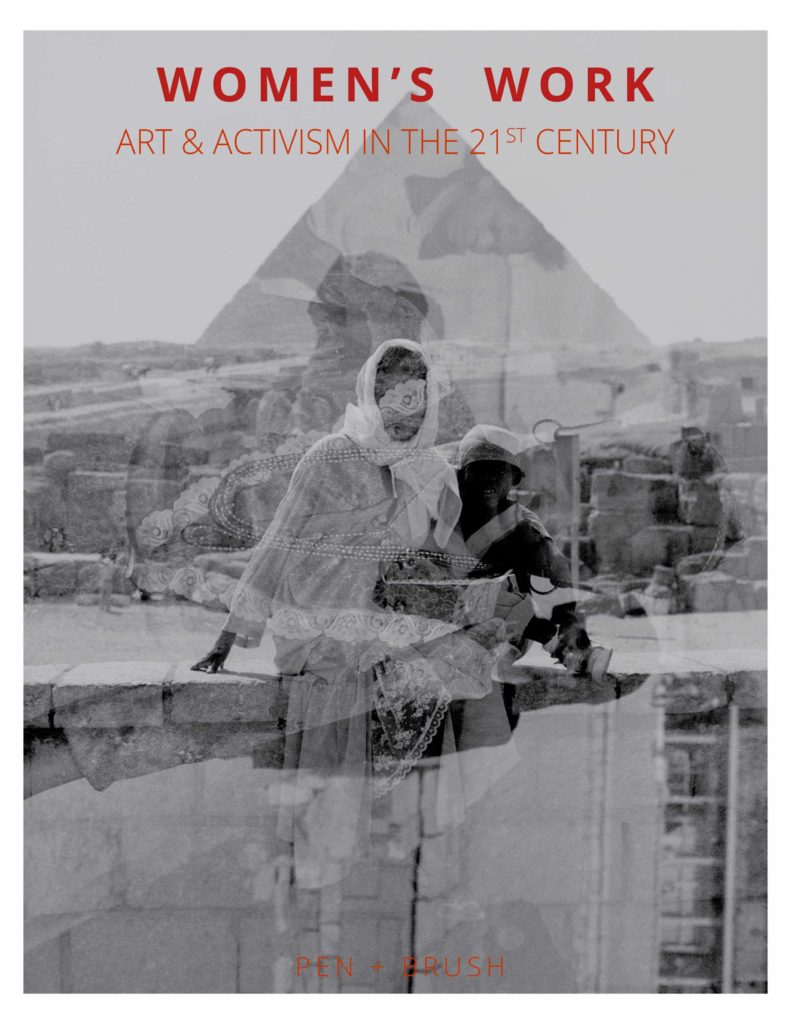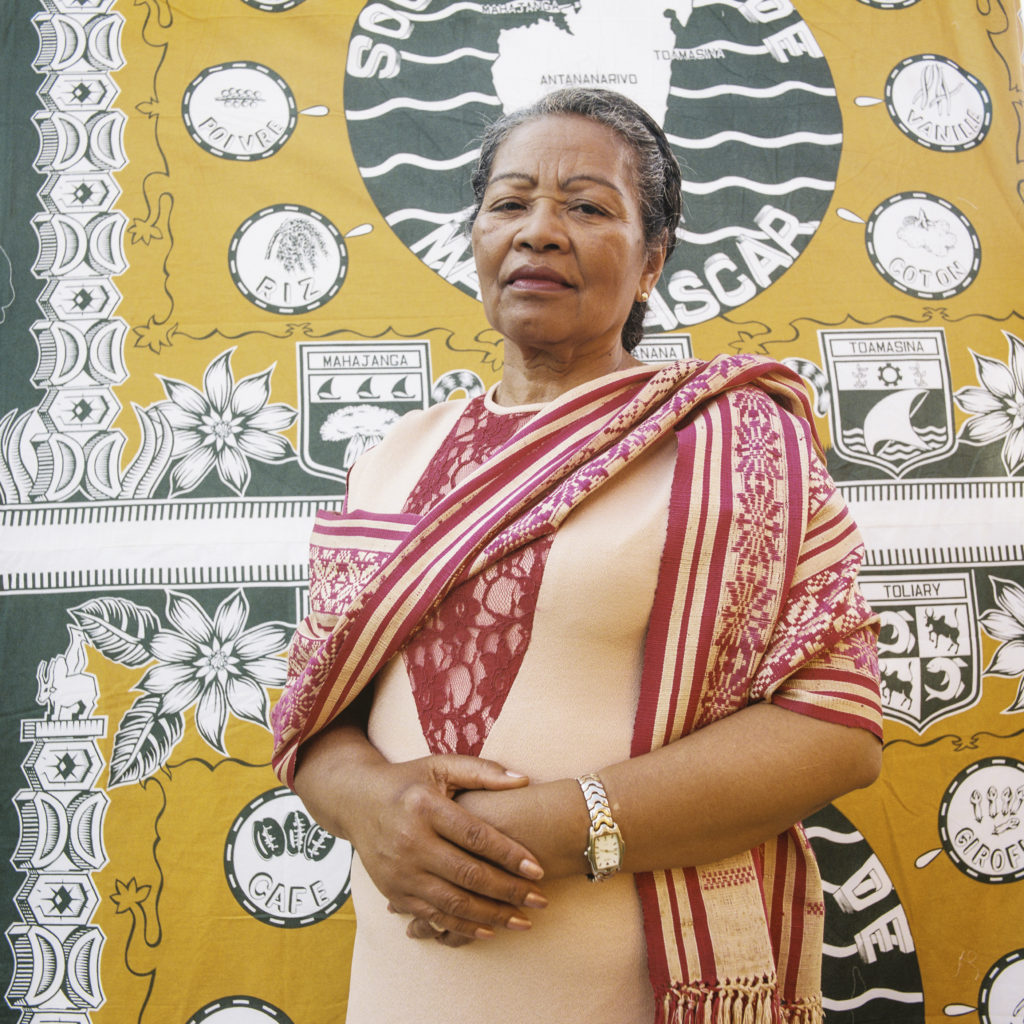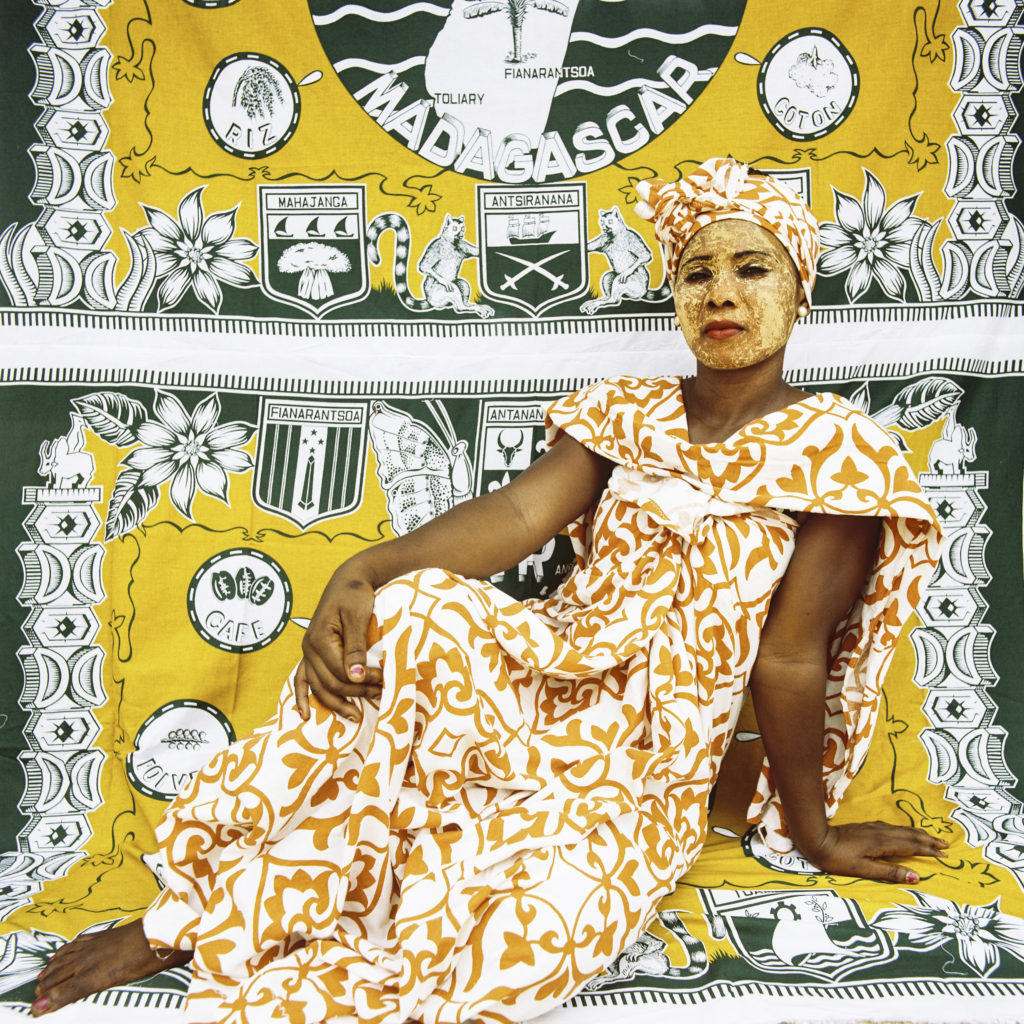Miora Rajaonary: The Dignified Gaze of Malagasy Women
Hanta, from the series Lamba, 2018. Archival c-print. © Miora Rajaonary. Courtesy of the artist.
Miora Rajaonary arrays the style, substance, power, and beauty in her portraits of women from Madagascar. In doing so, she imagines and accumulates a new set of narratives, first for herself as a Malagasy woman, and secondly for a larger purpose of representing women from a part of the world that largely remains under-the-radar.
BY ERIN HANEY | SPRING /SUMMER 2019
The Women’s Work Issue coincides with the Women’s Work: Art & Activism in the 21st Century exhibition at Pen and Brush in New York City. On view April 10 – August 2, 2019.
Miora Rajaonary takes on the time-honored and expansive work of photographic seeking. In her attuned gaze, evidenced by the collaboration and deep sense of intimacy between the artist and her multi-generational Malagasy subjects, Rajaonary arrays the style, substance, power, and beauty in her portraits of women from Madagascar. In doing so, she imagines and accumulates a new set of narratives, first for herself as a Malagasy woman, and secondly for a larger purpose of representing women from a part of the world that largely remains under-the-radar.
Rajaonary takes up some aspects of studio portraiture that resonate in other parts of Africa while forging new creative spaces previously undefined and unexpected. Her photographs shore up the possibilities of pictorial storytelling, in the very places we have not yet been able to properly see.
In her series Lamba (2018), which aptly makes its debut in Women’s Work, Rajaonary’s subjects are linked in prideful ambit, their confident gazes in tune with the medium-format camera and the methodical photographic process. They are each dressed in a lamba, the traditional Malagasy garment that serves as a symbol of the island’s cultural heritage.
The lamba is creatively styled and fashioned as shawls, wraps, dresses, headwraps, skirts, ornaments, and accessories in the self-assured hands of these women. How they choose to wear it signals their interpretation of the definition of Malagasy identity, a point of status that is inherently complex.
Mamie (top) and Geneviéve (bottom), from the series Lamba, 2018. Archival c-print. © Miora Rajaonary. Courtesy of the artist.
Depending on who is looking at a given lamba, the visual transmissions are versatile, multivalent, and specific. Meanwhile, playing the role of both photographer and stylist, Rajaonary poses and pairs the women with the lambahoany—a printed cotton version of the lamba depicting scenes from everyday life in Madagascar and featuring a proverb on the lower border of the design. They serve as a unifying backdrop that connects the subjects across the geography of Madagascar, bridging the land of the living and that of the ancestors, and functioning as both an aesthetic and important document of Malagasy culture.
Neither the high-end portrait studio makers in Madagascar’s capital city of Antananarivo, nor the photojournalists who must maintain a distance with their lens, are relevant models for this work. Rajaonary moves deliberately; it is clear she has been in conversation with her subjects.
In fact, she knows these women—among them are her family, her friends, her community. However, in the end, the project is larger than personal encounters. The portraits of these women are rooted in the inquiry and imaginary around Madagascar as a sign—to be seen and represented.
In Mamie, featuring the artist’s grandmother, Rajaonary reflects on how the lamba continues to serve as a powerful tool of agency for Malagasy women through generations. She says:
The black and white shoulder wrap that Mamie, my grandmother, is wearing has been an indispensable part of the feminine attire for Malagasy women of the central highlands of the country, especially for women born before the 1950s, who wear it everyday. Today, the shoulder wrap still allows women of all ages from the central highlands to celebrate their Malagasy identity and assert their femininity on formal occasions.
In the portrait Geneviève, her shoulder wrap is a most refined lamba. It is made of silk, and looking at it more closely, one sees the labor, love, and artistry in the making of its complex geometric designs. Rajaonary notes that the particular styling and fashioning of the lamba reflects the poser’s desire to convey social rank and a certain sense of power and pride.
Ramiadana, from the series Lamba, 2018. Archival c-print. © Miora Rajaonary. Courtesy of the artist.
The two young women in the portraits Ramiadana and Hanta are also in collaboration and conversation with Rajaonary. They each don a cosmetic mask infused with sandalwood called Masonjoany, a beauty ritual inherited from Indians and used to clean and protect the skin. In the present day, wearing Masonjoany is tied to certain traditional ceremonies and festive events and is in keeping with wearing lamba for those special occasions. A new generation of Malagasy women embrace the practice of face painting using Masonjoany as both a symbol of their heritage and customs and an expression of beauty.
Rajaonary’s commitment to exploring cultural depth and particularity through centering the lamba, lambahoany, and Masonjoany in her portraits is an expression of the artist as activist. She understands, especially in our current moment, the necessity to push the boundaries of how women are seen and not seen—indeed a delicate and politically fraught balance. In Lamba, Malagasy women are proud, dignified, empowered. In that regard, Rajaonary continues to pioneer.
♦
Erin Haney covers art, photography, media histories, activism and creative institutions internationally. Her recent book, Priya Ramrakha: The Recovered Archive (Kehrer, Heidelberg, 2018), is part of an ongoing collaboration that includes traveling exhibitions of Ramrakha’s photography in Johannesburg, Nairobi, Arles, and the U.S. Prior, she curated Sailors and Daughters for the Smithsonian’s National Museum of African Art and is the author of Photography and Africa (Reaktion, London, 2010). Haney currently teaches in the Washington, DC area and is a Research Associate at VIAD, University of Johannesburg.
OF NOTE Magazine is free to readers, free of advertising, and free of subscriptions—all made possible by generous supporters like you. Your tax-deductible gift will help us continue to feature innovative and emerging global artists using the arts as tools for social change.
OF NOTE Magazine is a fiscally sponsored organization of the New York Foundation for the Arts, a 501 (c) (3), tax-exempt organization. All donations are 100% tax-deductible to the full extent of the law.







